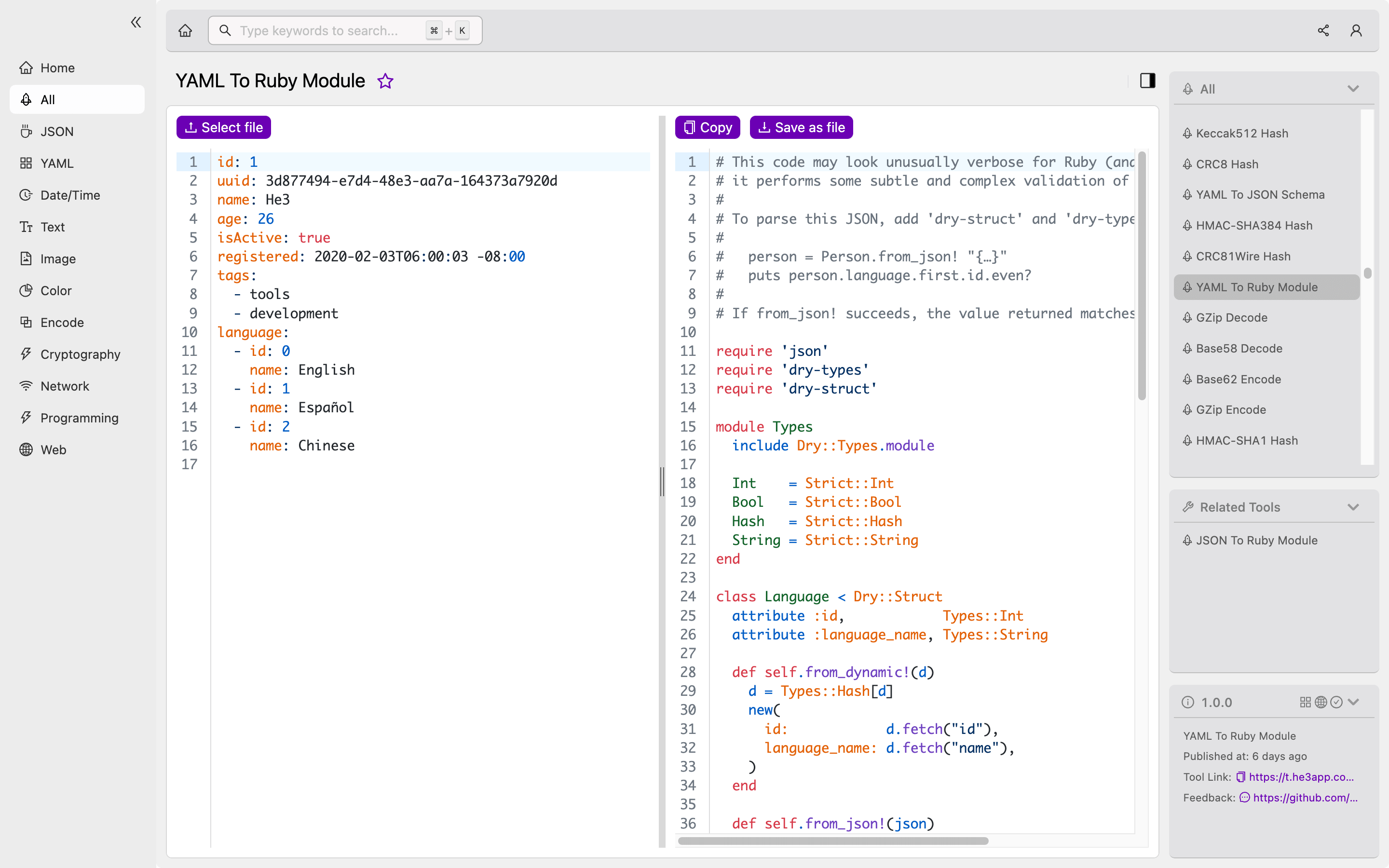Introduction
YAML, or “YAML Ain’t Markup Language,” is a human-readable data serialization format commonly used for configuration files and data exchange between programming languages. YAML To Ruby Module is a tool that converts YAML data structures into corresponding Ruby objects. In this article, we will explore the concept, how it works, key features, misconceptions, and FAQs.
How it Works
YAML To Ruby Module uses the YAML parser to read YAML data and create corresponding Ruby objects. The Ruby objects can then be used for various purposes, such as storing configuration data, generating code, or as input for other applications. The YAML data is structured as a series of key-value pairs in a tree-like structure. The YAML parser converts this structure into a Ruby Hash, which can be accessed and manipulated like any other Ruby object.
Scenarios for Developers
YAML To Ruby Module is useful in many scenarios, including:
- Generating code from configuration data
- Storing configuration data in a human-readable format
- Providing inputs for other tools and applications
- Interoperability between different programming languages
Sample Code
Here is an example of how to use YAML To Ruby Module:
require 'yaml'
require 'yaml-to-ruby'
data = YAML.load(File.read('config.yml'))
config = YAMLToRuby.convert(data)This code reads a YAML file config.yml, converts it into a Ruby Hash using the YAML parser, and then converts it into a corresponding Ruby object using the YAML To Ruby Module.
Key Features
Here are the key features of YAML To Ruby Module:
| Feature | Description |
|---|---|
| Compatibility | Works with any YAML data structure and Ruby version |
| Simplified Syntax | Provides a simplified syntax for creating Ruby objects from YAML data |
| Extensible | Can be extended and customized to support additional data types and formats |
| Performance | Fast and efficient YAML parsing and object creation |
Misconceptions and FAQs
Misconception 1: YAML is a Markup Language
Despite its name, YAML is not a markup language. It is a data serialization format that is designed to be easy to read and write. YAML is often used for configuration files, but it can also be used for data exchange between programming languages.
Misconception 2: YAML is Not Secure
While YAML is not inherently secure, it can be made secure by following best practices for data serialization and input validation. YAML To Ruby Module also provides additional security features, such as input filtering and output sanitization.
FAQ 1: Can YAML To Ruby Module Handle Large YAML Files?
Yes, YAML To Ruby Module can handle large YAML files efficiently. The YAML parser used by YAML To Ruby Module is optimized for performance and can handle large files with ease.
FAQ 2: Can YAML To Ruby Module Convert Ruby Objects to YAML?
No, YAML To Ruby Module only converts YAML data structures into Ruby objects. To convert Ruby objects to YAML, you can use the built-in to_yaml method or other YAML serialization libraries.
Conclusion
In conclusion, YAML To Ruby Module is a useful tool for converting YAML data structures into corresponding Ruby objects. Developers can use it for various scenarios, such as generating code, storing configuration data, providing inputs for other tools and applications, and interoperability between different programming languages. YAML To Ruby Module is compatible with any YAML data structure and Ruby version, provides a simplified syntax for creating Ruby objects from YAML data, and is fast and efficient in YAML parsing and object creation. Or you can use YAML To Ruby Module tool in He3 Toolbox (https://t.he3app.com?gfiz) easily.

